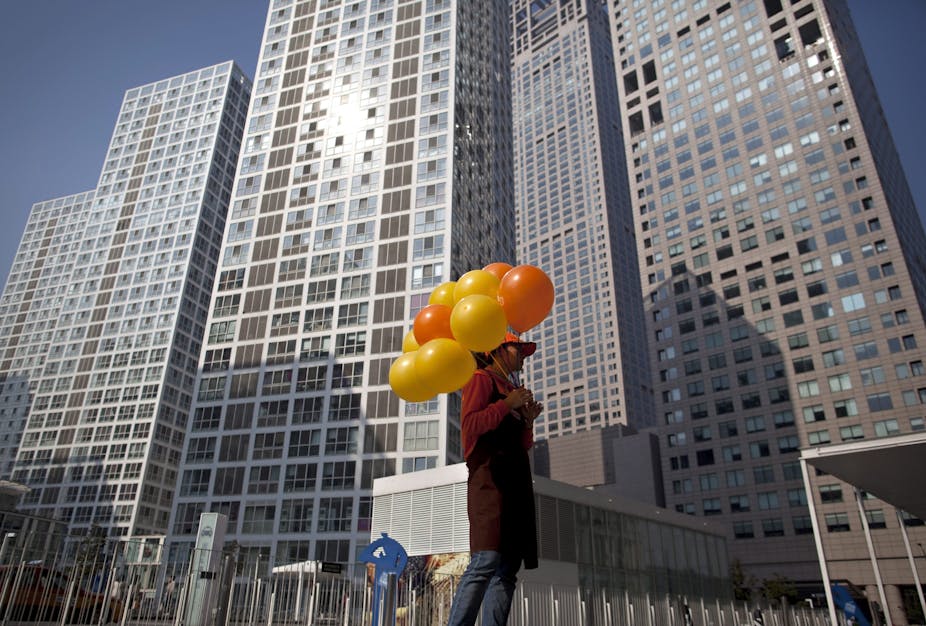Opposition leader Tony Abbott has sparked some controversy with his suggestion that Australia’s trade emphasis should be on Japan, rather than China.
Abbott’s suggestion that it would be easier to negotiate a free trade agreement with Japan as “a fellow market economy and a fellow liberal democracy” was blasted by Trade Minister Craig Emerson, who said Abbott would “trash” trade relations between the two countries.
Given that China is Australia’s largest trading partner for both its imports and exports, it is critical for Australia to come to grips with China’s unique mix of a planned and market economy.
Destination Asia
Somewhere between 50-56% of Australian businesses do business in Asia, depending on which survey you accept.
According to the Department of Foreign Affairs and Trade (DFAT), Australia’s top five export destinations for 2010-2011 are - in order - China, Japan, the Republic of Korea, India and Taiwan.

Our top five import destinations (again in order) are China, United States, Japan, Singapore and Germany.
In recent times an interesting change in these activities has been the increasing amount of investment flowing from China into Australia.
Investment shift
In 2007 Australian investment into China was on par with Chinese investment in Australia.
But each year since then this has changed so that now, for every dollar Australia seeks to invest in China, China seeks to invest $21 back.
The question of doing business with the Chinese is still highly relevant - the only shift has been the location.
Unfortunately, doing business with China has not been easy for Western organisation. Fundamentally the reason we fail is because we refuse to accept China is different and will remain so.
Now, with China projected to overtake the US as the world’s largest economy by 2027, the assumption of economic dominance is shifting to the East for the first time in 100 years.
By 2050 China’s economy will not only be the largest, but will be the size of America and India put together.
Its population is roughly equal to that of the US and India added together - substantially greater than the US population.

This situation makes China a superpower, both economically and politically. It is the latter that concerns many nations.
Yet doing business with China is not a question of choice but one of necessity. I have been preaching to companies for the last five years “You should have had a China strategy yesterday”.
Cultural change
To further understand China and its differences, I want to emphasise culture. Unique in the world, China’s model of a centrally planned economy and market economy with socialist characteristics is not easy to understand.
The Western cry for “transparency” reflects the frustration of failing to understand this system.
Equally China’s attempt to make its systems “transparent” does not really help. Dressing up a model that is completely different as something familiar merely papers over the differences.
The centrally planned economy has five year plans and 15 year plans. In these plans the government allocates resources to certain industries and sectors.

This type of central planning is foreign to a democratic country such as Australia.
Yet it is naive to think that a centrally planned system does not impact on business operations in Australia, as increasing merger and acquisition activities by Chinese companies in Australia demonstrates.
Understanding the culture
The Chinese business culture is a relationship-based networking credit system. The credibility of a contact is of greater importance than an established global brand name. (Although the two together would work better.)
The barriers to closer ties with China are largely due to the lack of understanding of cultural differences.
For instance: when the immigration policy changed and Chinese students were required to take up a different type of visa to Indian students, the perception was that Australia was treating Chinese students less favourably than the Indian students. As a result the student numbers dropped in 2009 and 2010.
Similarly, the latest changes in investment policies were seen as being directed at Chinese investment in particular.
There are many areas of cultural difference we are not mastering, although we have been trying to do business with China since the beginning of the “open door” policy in 1979.
How to succeed in China
In my latest book “Doing Business Successfully in China” I included a chapter titled “Eat, drink and may your business prosper”.

This chapter specifically discusses the role eating and drinking plays in business in China. This topic has not been previously covered.
Every business person who has been to China or will go to China has faced, or will face, this issue.
However the challenge is how to manage business dining and use it as an effective tool, instead of it being seen by some Western business people as a form of “bribery”. This is unique to the Chinese culture.
Eating and drinking is far more complex in business in China. Mastering the concept, as well as proper behaviour, will have a direct impact on business deals.
The above is only a glimpse of the many differences which impact on business transactions with China.
Australia has moved a very long way from the 1950s when over 50% of its exports went to the UK to today’s position of trading mostly with our Asian neighbours.
Do we see ourselves as a part of Asia? Or do we see ourselves as “superior” Asians? We must first answer these questions before we will be able to position ourselves.

